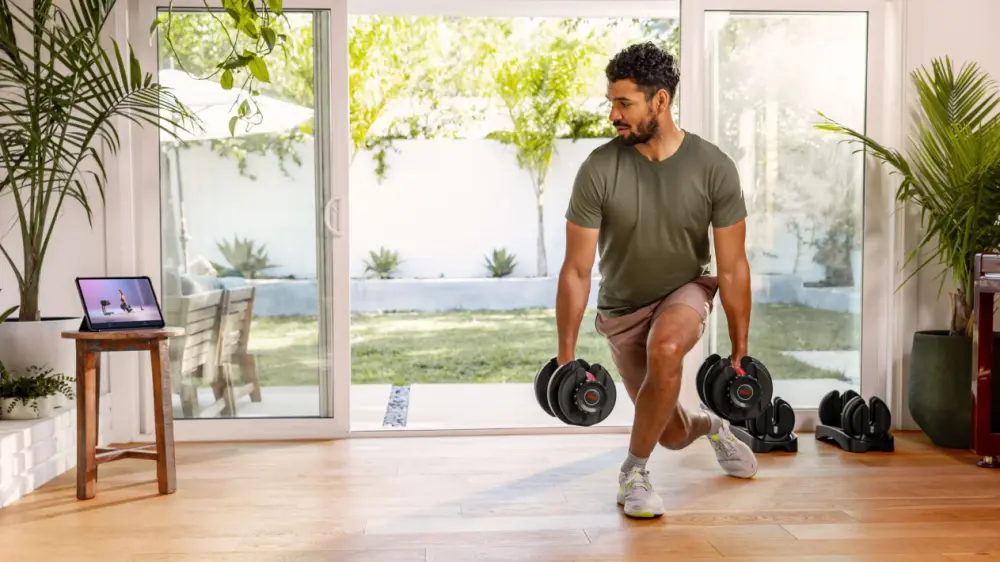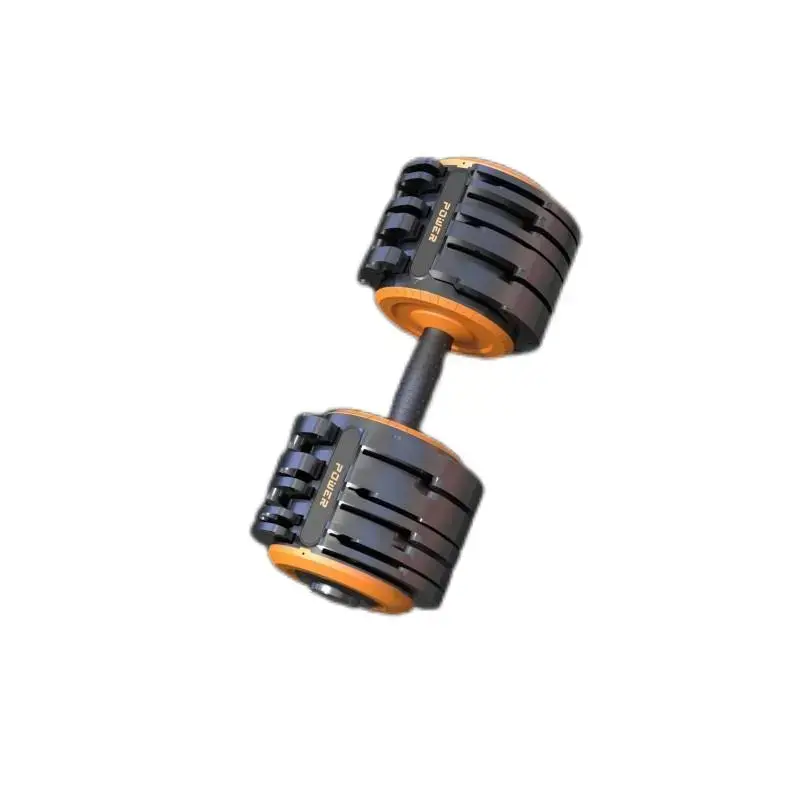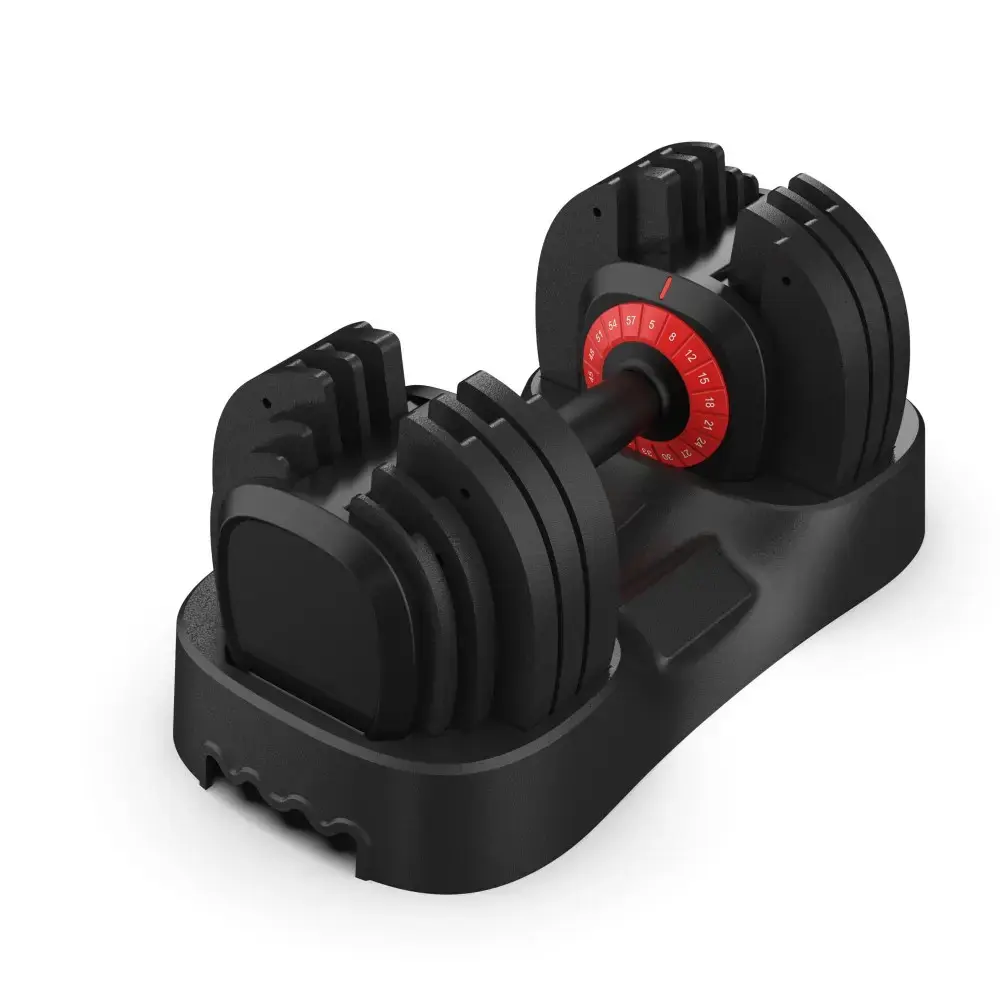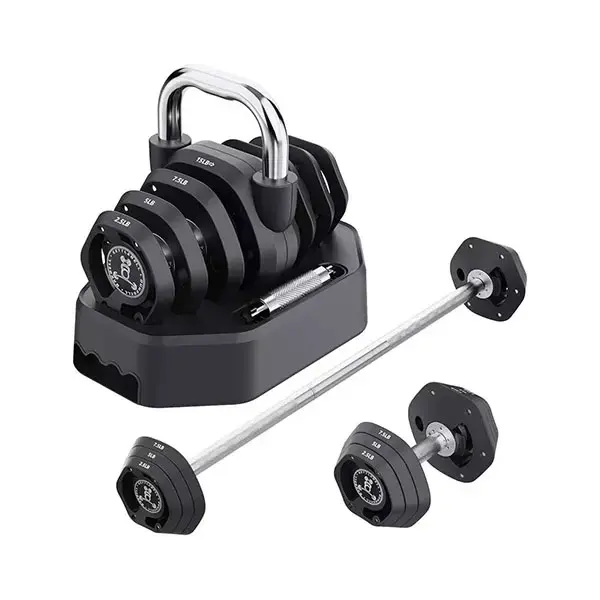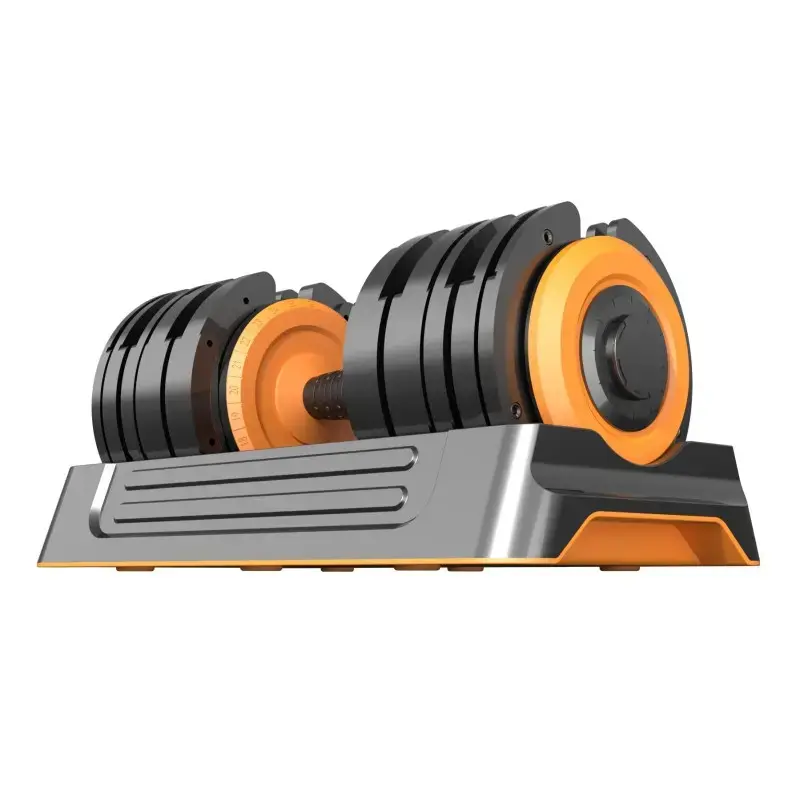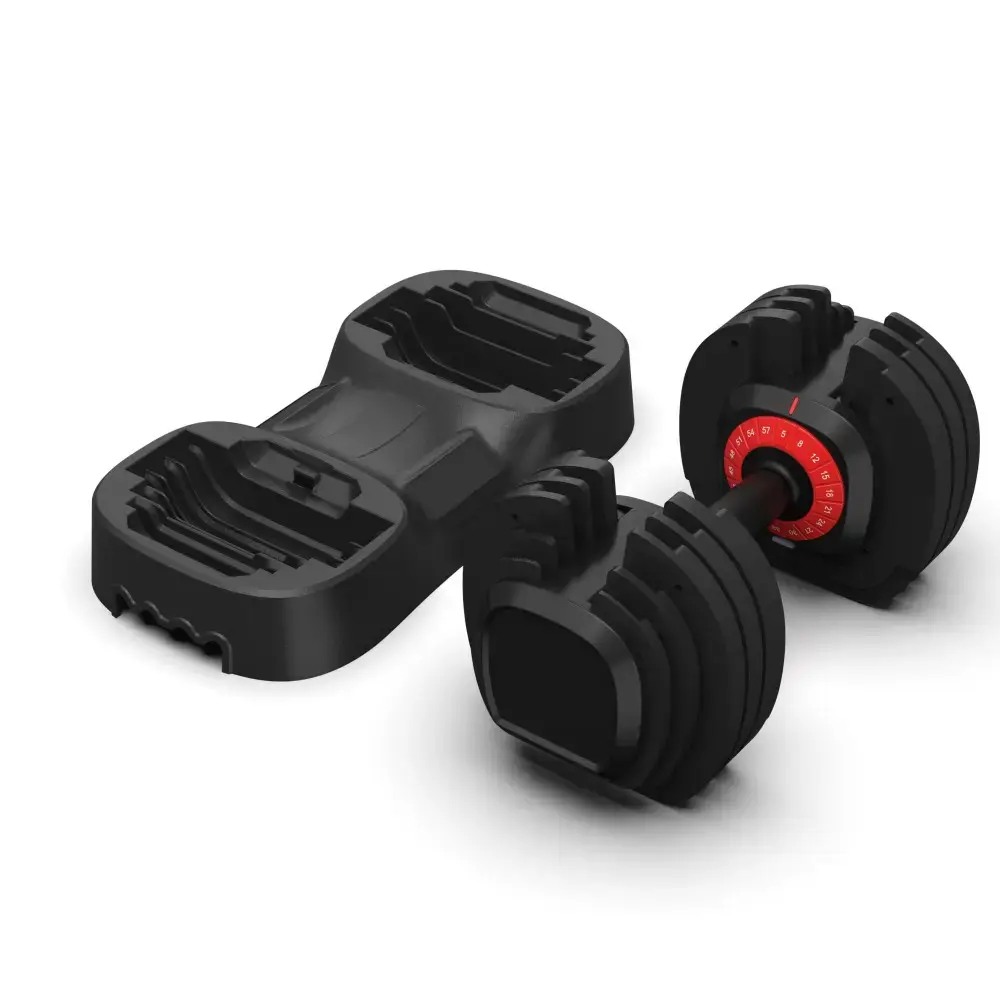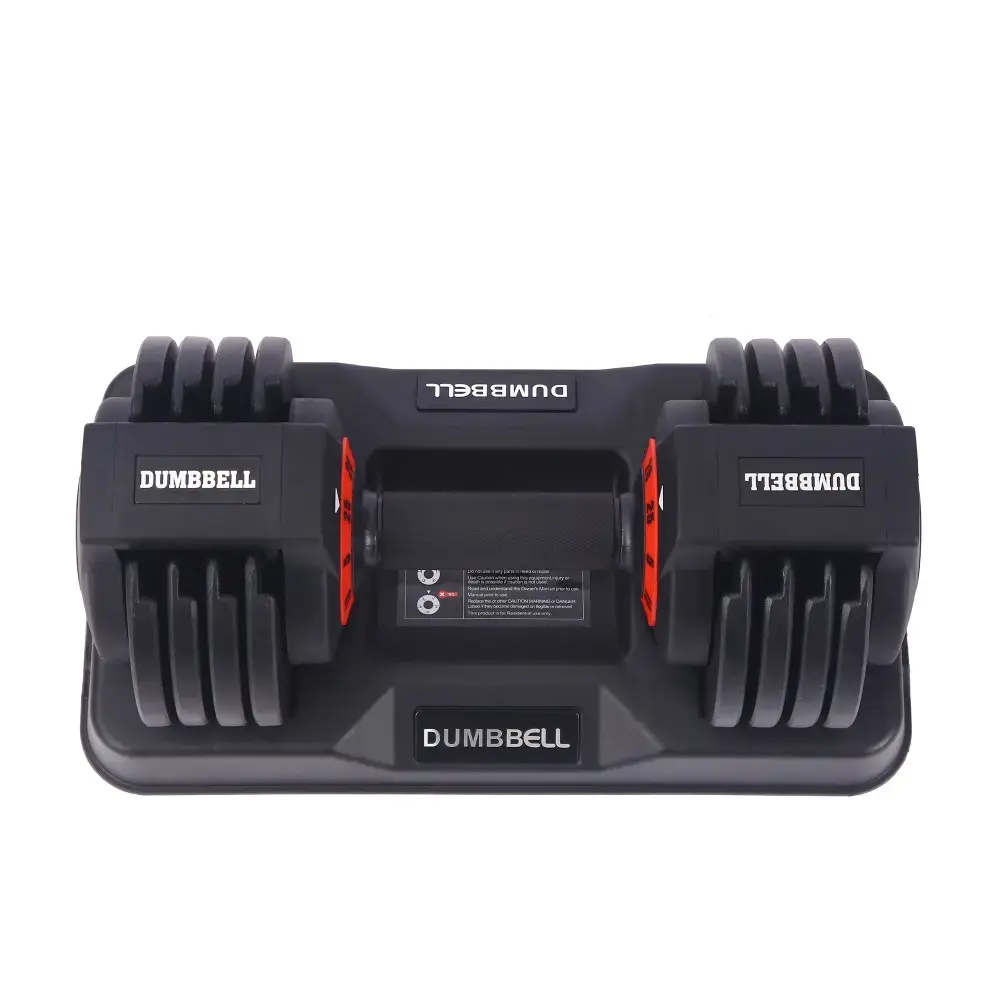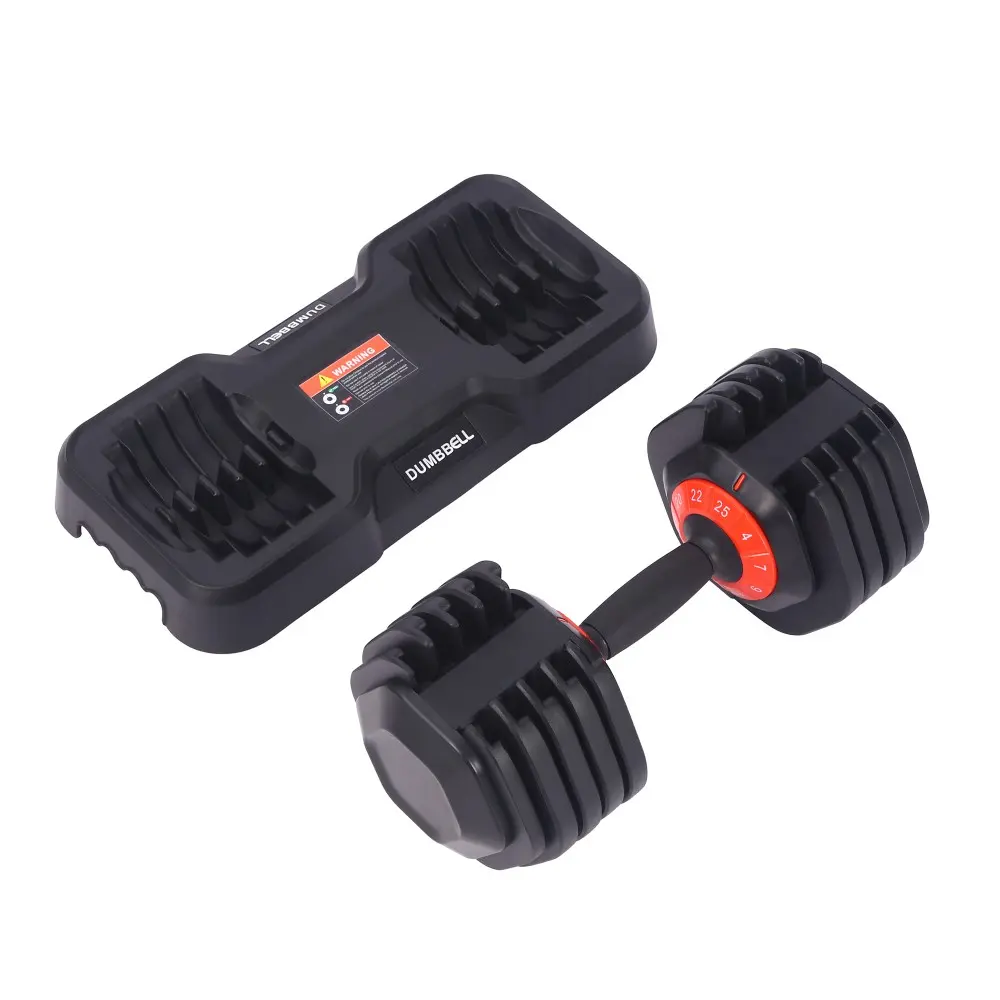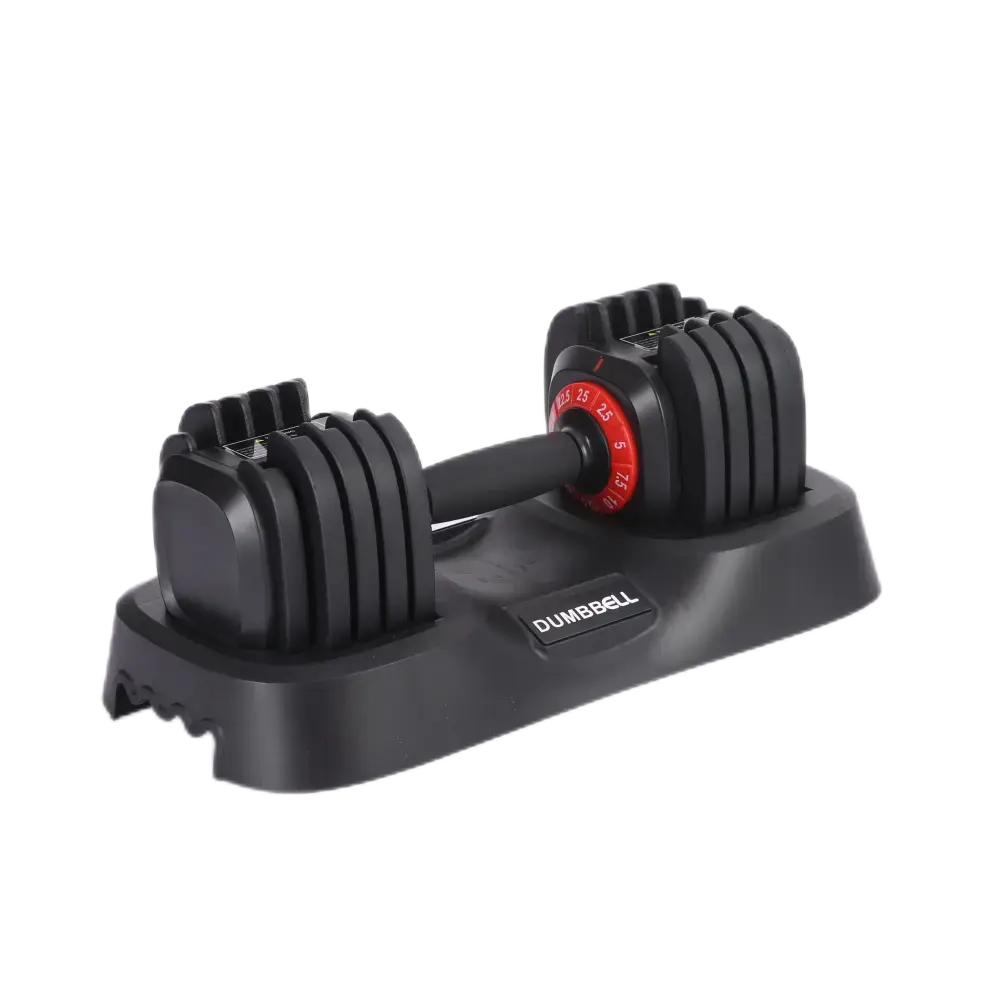Dumbbell exercise method
Dumbbell exercise method
- Basics of dumbbell exercise
- Upper limb exercise method
- Lower limb exercise method
- Core muscle exercise
- Exercise plan formulation
- Stretching and recovery after exercise
- Common mistakes and corrections
1. Basics of dumbbell exercise
1.1 Dumbbell selection criteria
Choosing the right dumbbell is a prerequisite for effective exercise. The weight and material of dumbbells vary depending on exercise goals and physical conditions.
Weight selection: For beginners, men can start with 2.5-5 kg and women with 1-2 kg. As strength increases, increase the weight by 10%-15% every 4-6 weeks. Studies have shown that using dumbbells that are suitable for one's own strength level can increase muscle activation by 20%-30% compared to blindly choosing heavy objects.
Material considerations: Cast iron dumbbells are durable and affordable, and Rubber-Coated Dumbbells are non-slip and reduce noise, making them suitable for home gyms. Plastic dumbbells are lightweight and suitable for children or patients in recovery. The difference in friction coefficient and grip of dumbbells made of different materials will affect the stability and safety of exercise.
1.2 Warm-up before exercise
Warm-up can reduce the risk of injury and improve athletic performance. A complete warm-up process includes full-body joint activities and targeted muscle activation.
Joint activity: Perform shoulder joint circles (15 circles each), wrist rotation (20 circles on each side), knee flexion and extension (15 times on each side) and other movements to fully secrete joint lubricating fluid and reduce joint wear. Experiments show that the range of joint motion can be increased by 15% - 20% after a full warm-up.
Muscle activation: Use elastic bands to stretch the chest and the back of the legs for 3 sets, 15 - 20 times each set, to awaken muscle fibers. After activation, the output of muscle strength can be increased by 10% - 15%, preparing for dumbbell exercise.
1.3 Correct grip and posture
Correct grip and posture are the key to effective exercise and avoiding injuries.
Grip points: Use a neutral grip (thumb facing up) or a straight grip (palm facing forward), with fingers naturally bent and the base of the thumb close to the dumbbell barbell. Studies have found that the correct grip can evenly distribute grip force and reduce the risk of hand injuries by 30% - 40%.
Posture standard: Whether standing or sitting, keep the spine neutral, tighten the abdomen, and avoid excessive forward or backward leaning. Take dumbbell curls as an example. Keep the body stable and only move the arms to exercise the biceps more accurately and reduce other muscle compensation.
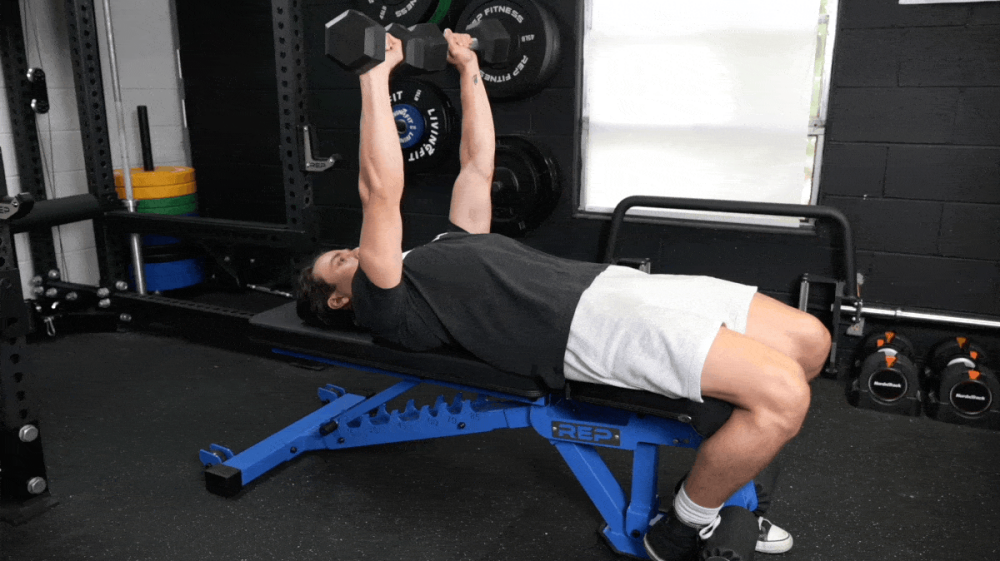
2. Upper limb exercise method
2.1 Biceps exercise
Dumbbell curls are a classic exercise for biceps.
Action essentials: Stand naturally with your feet shoulder-width apart, hold dumbbells in each hand, and let your arms hang naturally with your palms facing forward. Keep your upper arms fixed, use the elbow joint as the axis, and curl the dumbbells up to the level of your shoulders. Pause for a moment to feel the contraction of the biceps, and then slowly lower the dumbbells to the initial position. During the whole process, the body should remain stable and avoid using body swing to complete the movement, so as not to reduce the exercise effect and increase the risk of injury.
Number of training sets and repetitions: Beginners can do 3 sets, 8-12 times per set; those with a certain foundation can do 4-5 sets, 10-15 times per set. Studies have shown that following this number of sets and repetitions can effectively stimulate the growth of the biceps, increasing its strength and volume.
Variations: Hammer curls are also an effective exercise for the biceps. Hold a dumbbell in each hand, let your arms hang naturally, palms facing each other, keep your upper arms fixed, curl the dumbbells up to shoulder level, and then slowly lower them. Compared with standard curls, hammer curls focus more on training the long head and brachialis of the biceps, which can shape the muscle lines of the upper limbs from different angles and make the biceps fuller.
2.2 Triceps training exercises
Bent-over dumbbell arm curls are an effective way to train the triceps.
Action essentials: Stand naturally with your feet, lean forward, keep your upper body at about 45 degrees to the ground, hold a dumbbell in each hand, stretch your arms, and place the dumbbells on your sides. Keep your upper arms fixed, use your elbows as the axis, lift the dumbbells backward and upward until your arms are fully extended, pause for a moment, feel the contraction of your triceps, and then slowly lower the dumbbells to the initial position. During this process, ensure that the movement is stable and avoid shaking your body to fully exercise your triceps.
Training sets and repetitions: Beginners can do 3 sets, 10-12 times per set; advanced people can do 4-5 sets, 12-15 times per set. This training arrangement helps to fully activate the triceps and promote its strength and endurance.
Variations: Supine dumbbell arm extensions also have a good training effect on the triceps. Lie flat on a flat bench, hold a dumbbell in each hand, stretch your arms, and lift the dumbbells above your chest. Keep your upper arm fixed, use your elbow as the axis, lower the dumbbell toward your head until your arm is bent to about 90 degrees, then slowly straighten your arm and push the dumbbell back to the initial position. This action can better isolate the triceps and reduce the involvement of other muscles, thereby more effectively shaping the triceps.
2.3 Shoulder exercise
Dumbbell lateral raise is an important exercise for exercising the middle bundle of the shoulder deltoid muscle.
Action essentials: Stand naturally with your feet shoulder-width apart, hold a dumbbell in each hand, and let your arms hang naturally with your palms facing each other. Keep your body stable, raise your arms to both sides of your body at the same time until they are parallel to the ground, pause for a while, feel the contraction of the middle bundle of the deltoid muscle, and then slowly lower the dumbbell to the initial position. During the movement, avoid shrugging your shoulders and keep your shoulders stable to ensure that the middle bundle of the deltoid muscle is fully exercised.
Number of training sets and repetitions: Beginners can do 3 sets, 12-15 times per set; those with a certain foundation can do 4-5 sets, 15-20 times per set. Reasonable arrangement of sets and repetitions can effectively stimulate the middle bundle of deltoid muscle, make it gradually stronger, and improve the shoulder line.
Variation: Dumbbell front raise mainly targets the anterior bundle of deltoid muscle. Stand naturally with both feet, hold dumbbells in each hand, let your arms hang naturally, and your palms face your thighs. Keep your body stable, raise both arms forward at the same time until they are parallel to the ground, pause for a while, feel the contraction of the anterior bundle of deltoid muscle, and then slowly lower the dumbbells to the initial position. Through the combination of front raise and lateral raise, you can fully exercise the shoulder muscles and make the shoulders more rounded and powerful.
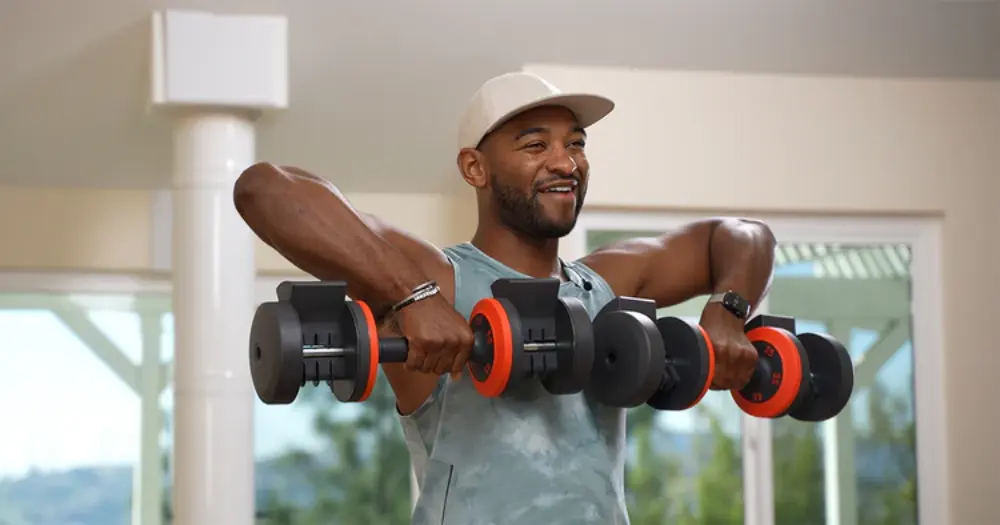
3. Lower limb exercise method
3.1 Squat action essentials
Squat is the core action for exercising lower limb muscles, mainly targeting quadriceps, gluteus maximus and biceps femoris.
Starting position: feet are shoulder-width or slightly wider, toes are naturally abducted about 30 degrees, and dumbbells are placed on shoulders or on both sides of the body. Chest and abdomen, keep the spine neutral, shoulders sink, and look forward.
Squatting process: inhale, bend the hips and knees, sit back with the buttocks, the center of gravity of the body falls between the heels and the forefoot, and the knees do not exceed the toes. Squat until the thighs are parallel to the ground or slightly lower, at this time the quadriceps and gluteus maximus are fully stretched, and the muscle tension is felt. Studies have shown that when squatting until the thighs are parallel to the ground, the quadriceps are activated to the highest degree, and the recruitment rate of muscle fibers can reach more than 80%.
Standing up process: exhale, heel force, hip and knee joints stretch at the same time, and push the body back to the starting position. During the standing up process, keep the body stable and avoid excessive forward or backward leaning of the waist to ensure the standardization and safety of the movement. Each training can be performed 3-4 sets, 10-15 times per set, and rest for 1-2 minutes between sets. As the training level improves, the dumbbell weight and number of sets can be appropriately increased to further improve the lower limb strength and muscle endurance.
3.2 Deadlifting skills
Deadlifting mainly exercises the gluteus maximus, biceps femoris and back muscles, and has a significant effect on improving the overall strength of the body and the explosive power of the lower limbs.
Starting position: Stand in front of the dumbbell bar with your feet shoulder-width apart, hold the dumbbells with both hands, and the grip is slightly wider than the shoulders. Keep your chest and abdomen straight, sink your shoulders, keep your spine naturally straight, and your hip joints slightly higher than your knee joints, with your knees slightly bent.
Pulling up process: Inhale, stretch your hip and knee joints at the same time, and pull the dumbbells up until your body is upright. During the pulling up process, keep your back straight, avoid bending your waist, and concentrate your strength on your hips and legs. When the dumbbell passes the knee, the hip joint quickly pushes forward to complete the deadlift. At this time, the gluteus maximus and biceps femoris reach the maximum contraction, and the tension of the muscle fibers is the greatest. Studies have found that during the deadlift, the activation of the gluteus maximus can reach 70%-80%, and the activation of the biceps femoris can reach 60%-70%.
Lowering process: Exhale, bend the hip joint first, then bend the knee joint slightly, and slowly lower the dumbbell to the ground. During the lowering process, keep your back straight, control the speed of the dumbbell's descent, and avoid sudden release and injury. Each training can be performed 3-4 sets, 8-12 times per set, and rest for 1-2 minutes between sets. In order to increase the difficulty and effect of the training, you can add a pause action during the deadlift, that is, pause for 2-3 seconds when the dumbbell is halfway pulled up, and then continue to complete the action, which can better stimulate the muscles and improve muscle strength and endurance.
3.3 Calf training movements
The calf muscles include the soleus and gastrocnemius. Through exercise, you can strengthen the calf strength and improve the body's stability and explosive power.
Standing heel raise: Put your feet shoulder-width apart and hold the dumbbells with both hands on both sides of the body or shoulders. Keep your chest and abdomen straight and keep your spine neutral. Inhale, slowly lift your heels until you stand on your toes and feel the contraction of your calf muscles. During the heel lift, keep your body stable and avoid shaking. Exhale, slowly lower your heels and return to the starting position. You can do 3-4 sets of 15-20 times per set, and rest for 1-2 minutes between sets. To increase the difficulty of the training, you can add single-leg standing during the heel lift, that is, when the heels are raised to the highest point, lift one foot, stand on one foot for 2-3 seconds, and then switch to the other foot to practice, which can better exercise the balance and strength of the calf muscles.
Seated heel raise: Sit on a bench with your feet flat on the ground and hold dumbbells in both hands on your thighs. Place the front of your feet on a step or block with your heels suspended in the air. Inhale and slowly lift your heels until your calf muscles are fully contracted. Exhale, slowly lower your heels and return to the starting position. You can do 3-4 sets of 12-15 times per set, and rest for 1-2 minutes between sets. Seated heel raises mainly target the soleus muscle. By changing the body posture and the position of the feet, the soleus muscle can be better isolated and fully exercised.

4. Core muscle exercise
4.1 Sit-up variations
Sit-ups are a classic exercise for exercising the core muscles. Variations can increase the fun and pertinence of the exercise.
Basic sit-ups: Lie flat on a yoga mat with your feet fixed and your hands crossed in front of your chest or ears. Use your abdominal strength to lift your upper body until your shoulders are off the ground, then slowly lower it. Studies have shown that standard sit-ups can effectively activate the rectus abdominis. Each training session can be performed 3-4 sets, 15-25 times per set, with 1-2 minutes of rest between sets.
Dumbbell sit-ups: On the basis of basic sit-ups, hold dumbbells in both hands and place them in front of your chest. During the process of getting up, keep the dumbbells stable to increase the load on the abdominal muscles and further enhance the exercise effect. This variation is suitable for exercisers with a certain foundation. Each training session can be performed 3-4 sets, 12-18 times per set.
V-type sit-ups: lift your feet and move them together with your upper body to form a V shape. This action not only exercises the rectus abdominis, but also effectively activates the oblique abdominal muscles and increases the stability of the core muscles. Each training session can be performed 3-4 sets, 10-15 times per set.
4.2 Key points of Russian twists
Russian twists are an effective exercise for exercising the oblique abdominal muscles and can enhance the rotational stability of the core muscles.
Starting position: Sit on a yoga mat, lift your feet, bend your knees slightly, and hold dumbbells in front of your chest with both hands. Keep your back straight, your abdomen tight, and your body tilted back about 45 degrees.
Action process: Use the power of the oblique abdominal muscles to rotate the upper body to one side, so that the dumbbells are as close to the ground as possible, and then quickly rotate to the other side. During the rotation, keep your body stable and avoid excessive twisting of the waist. Studies have shown that Russian twists can activate the oblique abdominal muscles to 60% - 70%. Each training session can be performed 3 - 4 sets, 15 - 20 times per set.
Notes: Control the speed during the movement and avoid using inertia to complete the movement, so as not to reduce the training effect. At the same time, keep your breathing even and avoid holding your breath.
4.3 Plank support assistance
Plank support is a static core muscle training movement that can effectively enhance the stability and endurance of the core muscles.
Basic plank support: support the ground with both hands, stretch your arms, and point your feet on the ground, keeping your body in a straight line. Keep your abdomen tight to avoid sinking your waist or tilting your hips. Studies have shown that plank support lasting 30 - 60 seconds can effectively activate the core muscles. Each training session can be performed 3 - 4 sets, each set lasting 30 - 60 seconds, and rest between sets for 1 - 2 minutes.
Dumbbell side plank support: On the basis of basic plank support, the body tilts to one side, supports the ground with one hand, and holds a dumbbell in the other hand and stretches it upward. Keep your body stable and feel the contraction of the oblique muscles. This variation can better isolate the oblique muscles of the abdomen. You can do 3-4 sets per training, 15-20 seconds on each side.
Plank support leg raise: On the basis of the basic plank support, lift one foot, keep balance, then slowly put it down, and then lift the other foot. This action can increase the difficulty of balance training for the core muscles. You can do 3-4 sets per training, 10-15 times per set.

5. Exercise plan formulation
5.1 Beginners' plan arrangement
Beginners' dumbbell exercise plan should focus on learning basic movements and gradual muscle adaptation to avoid injuries caused by overtraining.
Exercise frequency: 3 exercises per week, with 1-2 days between each exercise to give the muscles enough recovery time.
Exercise duration: Each exercise should last 30-40 minutes, including warm-up and relaxation time.
Movement selection: Mainly choose basic and easy-to-master movements, such as dumbbell curls (exercise biceps), bent-over dumbbell arm extensions (exercise triceps), dumbbell lateral raises (exercise the middle deltoid muscle of the shoulder), squats (exercise lower limb muscles), standing heel raises (exercise calf muscles) and basic sit-ups (exercise core muscles), etc.
Training sets and repetitions: 2-3 sets of each movement, 8-12 times per set. Rest for 1-2 minutes between sets to ensure that the muscles are fully recovered.
Weight selection: Choose the appropriate dumbbell weight according to your own strength level, ensure that the movements are standard and the prescribed number of times can be completed. If the prescribed number of times cannot be completed, the weight can be appropriately reduced.
Notes: During the exercise, pay attention to the standardization of the movements and avoid using inertia to complete the movements. At the same time, keep breathing evenly and avoid holding your breath. Do appropriate stretching after exercise to relieve muscle tension and promote muscle recovery.
5.2 Intermediate Advanced Plan
The dumbbell exercise plan for intermediates should increase the training intensity and movement difficulty on the basis of beginners to further improve muscle strength and endurance.
Exercise frequency: 4-5 exercises per week, with 1 day interval between each exercise, and arrange the training of different muscle groups reasonably to avoid excessive fatigue.
Exercise duration: Each exercise duration is extended to 40-50 minutes, and the training volume is appropriately increased.
Action selection: On the basis of basic movements, add some variations and compound movements. For example, hammer curls (exercise biceps), supine dumbbell flexion (exercise triceps), dumbbell front raises (exercise the anterior deltoid of the shoulder), deadlifts (exercise the gluteus maximus, biceps femoris and back muscles), single-leg standing heel raises (exercise the balance ability of the calf muscles) and dumbbell sit-ups (increase the load on the abdominal muscles), etc.
Number of training sets and repetitions: 3 - 4 sets of each movement, 10 - 15 times per set. Rest for 1 - 2 minutes between sets and increase the intensity of training appropriately.
Weight selection: According to the improvement of your own strength, increase the weight of the dumbbells appropriately, but ensure the standardization and safety of the movements. If the movement is deformed or the prescribed number of repetitions cannot be completed, the weight should be adjusted in time.
Notes: During the exercise, pay attention to the contraction and relaxation of the muscles and feel the muscle force process. At the same time, keep the body stable and avoid using the strength of other parts of the body to complete the movement. After exercise, fully stretch and relax to promote muscle recovery and prevent muscle soreness.
5.3 Challenge Plan for Advanced Players
The dumbbell training plan for advanced players should focus on high-intensity training and comprehensive muscle development, challenge their own limits, and improve overall physical fitness.
Frequency of exercise: 5-6 exercises per week, with 1 day interval between each exercise, and reasonable arrangement of training for different muscle groups to ensure that the muscles are fully recovered.
Exercise duration: Each exercise duration is extended to 50-60 minutes, and the training volume and intensity are increased.
Movement selection: Choose more challenging compound movements and multi-joint movements, such as dumbbell press (exercise shoulder and chest muscles), dumbbell rowing (exercise back muscles), single-leg squats (exercise balance and strength of lower limb muscles), V-type sit-ups (exercise core muscle stability) and Russian twists (exercise abdominal oblique muscles). At the same time, some supersets and circuit group training can be added to improve training efficiency and effect.
Number of training sets and repetitions: 4-6 sets of each action, 12-20 times per set. Rest for 1-2 minutes between sets, appropriately reduce rest time, and increase training intensity.
Weight selection: Choose heavier dumbbells for training according to your own strength level, but ensure the standardization and safety of the movements. If the movement is deformed or the prescribed number of repetitions cannot be completed, the weight should be adjusted in time.
Notes: During the exercise, focus on muscle explosiveness and endurance training, and keep the movements fast and powerful. At the same time, keep breathing evenly and avoid holding your breath. After exercise, fully stretch and relax to promote muscle recovery and prevent muscle soreness and injury.

6. Stretching and recovery after exercise
6.1 Upper limb stretching
Stretching the upper limbs after exercise helps relax muscles, reduce muscle soreness, and improve muscle flexibility and recovery speed.
Shoulder stretching: Stand naturally with your feet, cross your fingers, stretch your arms forward, and then slowly lift them up until your arms are perpendicular to the ground, and hold for 15-30 seconds. This action can effectively stretch the deltoid muscles of the shoulder and relieve shoulder tension. Studies have shown that regular shoulder stretching can increase the range of motion of the shoulder by 10%-15%.
Biceps stretch: Stand naturally with your feet, grab the left door frame or fixed object with your right hand, turn your body to the right until your left arm feels stretched, hold for 15-30 seconds, and then switch to the other side. This action stretches the biceps by twisting the body and reduces muscle tension.
Triceps stretch: Stand naturally with your feet, grab your left elbow with your right hand from above your shoulder, pull your left arm to the right until your left triceps feel stretched, hold for 15-30 seconds, and then switch to the other side. This action can effectively relax the triceps and promote muscle recovery.
6.2 Key points of lower limb stretching
Lower limb stretching is essential to relieve leg muscle fatigue, prevent muscle strains, and improve athletic performance.
Quadriceps stretch: Stand naturally with your feet, grab your right ankle with your right hand, pull your right heel toward your buttocks until your right leg quadriceps feel stretched, hold for 15-30 seconds, and then switch to the other side. Studies have shown that quadriceps stretching can significantly reduce muscle tension and reduce muscle soreness after exercise.
Hamstring stretch: Sit on a yoga mat, stretch your legs, stretch your hands forward as far as possible, touch your toes, keep your back straight, feel the stretch of your hamstrings, and hold for 15-30 seconds. This action can effectively stretch the hamstrings, improve leg flexibility, and reduce leg muscle tension.
Calf stretch: Face the wall, hold the wall with both hands, feet shoulder-width apart, right foot in front, left foot behind, left leg straight, heel close to the ground, body leaning forward until the left calf feels stretched, hold for 15-30 seconds, then switch to the other side. This action can effectively relax the soleus and gastrocnemius muscles and reduce calf muscle tension.
6.3 Notes on recovery period
Reasonable arrangement of the recovery period is crucial to the consolidation of exercise effects and physical health.
Adequate sleep: Ensure 7-9 hours of high-quality sleep every night. During sleep, the body secretes growth hormone to promote muscle repair and growth. Studies have shown that adequate sleep can increase muscle recovery speed by 30%-40%.
Reasonable diet: Intake of enough protein, such as chicken breast, fish, beans, etc., helps muscle repair; at the same time, supplement carbohydrates, such as whole wheat bread, oats, etc., to provide energy for the body and promote recovery. In addition, drink plenty of water to maintain the body's water balance, which helps to excrete metabolic waste.
Avoid overtraining: Follow the exercise plan to avoid muscle fatigue and injury caused by overtraining. If the body is tired or painful, the training intensity should be appropriately reduced or the exercise should be suspended to give the body enough time to recover.
Massage and relaxation: Regular muscle massage can effectively promote blood circulation, relieve muscle tension and accelerate recovery. Each massage time is controlled within 15-20 minutes, focusing on massaging the muscle groups after exercise.
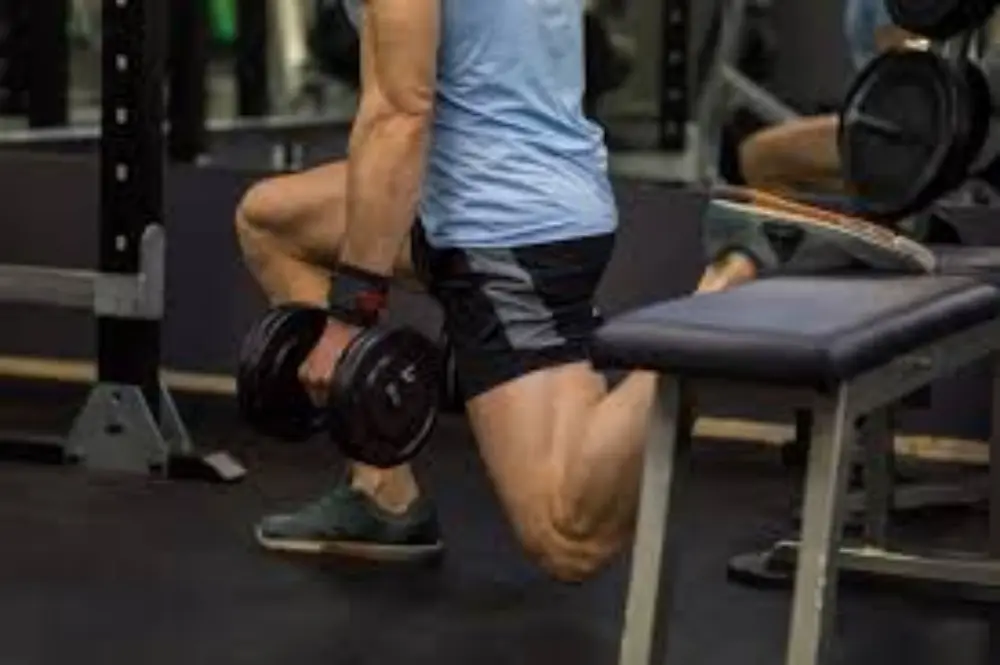
7. Common mistakes and corrections
7.1 Movement deformation problem
Movement deformation is a common mistake in dumbbell exercise, which not only reduces the effect of exercise, but also may increase the risk of injury. The following are several common movement deformations and their correction methods:
Knee inward when squatting: Knee inward will cause abnormal pressure on the knee joint and increase the risk of injury. The correction method is to keep the knees in the same direction as the toes, and open the knees as far as possible when squatting to avoid inward buckling. You can place two small obstacles on both sides of the feet, such as yoga bricks, and gently touch the obstacles when squatting with your knees to help find the correct knee direction.
Bending the waist during deadlift: Bending the waist may cause lumbar spine injury. The correct posture is to keep the back straight, the shoulders down, and the spine naturally straight. During the deadlift, you can imagine yourself as a puppet, with your body being pulled straight from the top of your head by a string, and maintain this posture to complete the movement.
Body shaking during dumbbell curls: The body shakes to complete the movement with the help of inertia, rather than relying on the power of the biceps. The correction method is to stand naturally with both feet, keep the body stable, and focus on the contraction and relaxation of the biceps. You can practice in front of a mirror to observe whether the body shakes to ensure standard movements.
7.2 Improper weight selection Improper weight selection will affect the exercise effect and safety:
Too light weight: It cannot effectively stimulate muscle growth. You can determine whether the weight is appropriate by testing the maximum number of repetitions (RM). For example, the weight of dumbbell curls should make beginners feel muscle fatigue after 8-12 times and unable to complete another standard movement.
Too heavy weight: It is easy to cause deformation and injury. If you cannot maintain a standard posture when completing the movement, or need to use the strength of other parts of the body to complete the movement, it means that the weight is too heavy and you need to reduce the weight.
7.3 Wrong breathing rhythm
The correct breathing rhythm helps to keep the movement stable and improve the exercise effect:
Holding your breath: Holding your breath during exercise will increase blood pressure and increase the cardiovascular burden. The correct way to breathe is to exhale when exerting force and inhale when relaxing. For example, when squatting, inhale during the squatting process and exhale when standing up; when doing dumbbell presses, exhale during the press and inhale when lowering.
Shortness of breath: Shortness of breath will affect the body's oxygen supply and cause increased fatigue. Keep your breathing even and rhythmic, and avoid shortness of breath. You can improve your breathing rhythm by practicing abdominal breathing, where your abdomen expands when you inhale and contracts when you exhale, making your breathing deeper and steadier.
